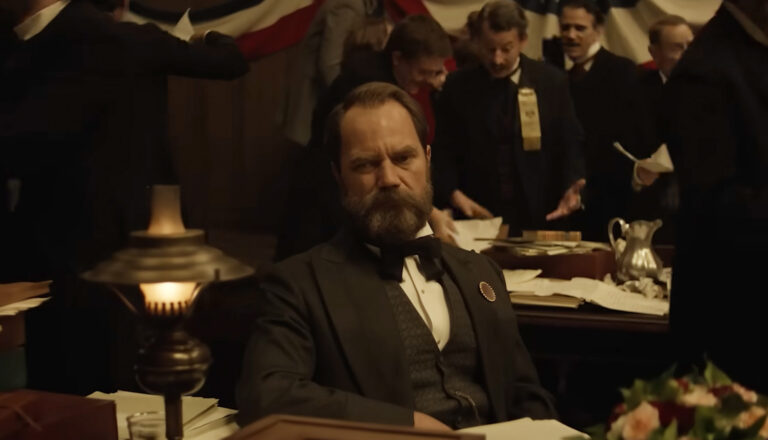
Disney Twisted-Wonderland: The Animation
In Twisted-Wonderland on Disney+, Yu finds himself at a school of magic, governed by Disney villain-inspired houses. And he desperately wants to find his way back home.

She was considered one of Britain’s greatest beauties. He was heir to the Duchy of Argyll.
A fairytale romance? Hardly. Not even in the beginning.
Ian Campbell was no Prince Charming—unless it was OK for Prince Charming to be habitually unfaithful to his previous wives. And while Margaret Sweeny’s glamour was regularly documented across England’s glossiest magazines, her private dalliances were the stuff of drawing-room whispers.
Their past was hardly evidence the two would tie the knot and live faithfully, happily ever after. But few could’ve predicted just how unhappily their relationship would end.
The two officially met on the train: Ian leered at Margaret and told her that he’d seen her once before: He’d said at the time that if Margaret was his wife, he’d never let her out of his sight.
“Who did you say that to?” Margaret asks with a playful grin.
“Janet,” Ian says. “My first wife. I rather think that’s why she divorced me.”
He was on wife No. 2 at the time, but that didn’t stop Ian and Margaret from embarking on a torrid, tabloid love affair. Soon, Ian’s mortified spouse gave Ian the divorce he coveted. Ian and Margaret married in 1951. But wedded bliss didn’t even last long enough for Ian to carry Margaret over the threshold.
Ian grew distant and sank deeper into drink. Margaret obsessed over what might become of her if Ian dumped her, too. Soon they were both sleeping around.
But while Ian’s affairs were the stuff of whispers, Margaret’s were documented dalliances, commemorated in word and picture and eyewitness accounts. Ian, and the locksmith he hired, made sure that Margaret’s affairs were well chronicled.
By 1963, they were in court. And just like decades before, Margaret was the talk of the town.
Only this time, she wasn’t lauded for her fashion; she was lambasted for her fornication.
A Very British Scandal, based on the true, sordid story of the 11th Duke of Argyll and his famous third wife, feels very British indeed. Claire Foy, a two-time Emmy winner for her portrayal of Queen Elizabeth in Netflix’s The Crown, plays the glamorous Margaret, sporting the crispest of British accents and the highest of high fashion. Paul Bettany’s Ian feels like a member of a rotting aristocracy—patching up his shambling estate with his wife’s money as he drinks and gambles himself into near oblivion.
Decay is indeed a key word for A Very British Scandal: Morality, it seems, has putrefied here, almost beyond recognition.
The story (based on a book by Sarah Phelps) partly tries to reframe Margaret Whigham/Sweeny/Campbell as something of a victim: While society turned away from Ian’s own scandalous life, it focused on Margaret’s with a withering glare—a magnifying glass lens burrowing into the duchess as if she was an ant. The show doesn’t excuse her choices, but it does—and somewhat justifiably—point to Ian and say, “Oh, yeah? What about him?!”
But let’s not lose sight of the overarching issue here: To try to say that one is “worse” than the other runs the risk of relativism, when in reality both acted horrifically—both in each other’s eyes and, if you want to get moralistic, in the eyes of God. It’s telling that anyone who embraces a more traditional view of the bounds of sexuality is treated as a pinch-mouthed prude.
When Margaret’s mother tries to make just such a point to her daughter early in her relationship with Ian—that it’s unseemly to carry on with a married man as Margaret is doing—the future duchess waves it off.
“It’s not adultery if the marriage isn’t happy,” she says. “It doesn’t count.” And the show itself seems to sympathize more with Margaret than her seething, critical mother.
A Very British Scandal is built on wealth and decadence: The liquor, the drugs, the threats, the betrayals, the affairs, the sex. The sex. The sex. It’s not as if the story slips occasionally into salacious behavior and we can say, “Well, isn’t that too bad.” No, the salacity is the story. Strip it away, and—as stylish and sleek as A Very British Scandal may look—there’s nothing worth telling at all.
The story begins as Margaret arrives at an Edinburgh court in 1963, as the divorce proceedings between her and Ian get underway. Ian offers to lay off if she gives him the divorce he wants: “No need for you to be confronted with the evidence.” She refuses his offer.
Most of the episode is told in a flashback to happier times. They meet on a train, and Margaret Sweeny is swept away not just by Ian, but by the fact that he’s in line to become the Duke of Argyll and inherit a gloriously ramshackle castle. When the current duke dies and Ian inherits the property, he and Margaret begin a love affair (much to the mortification of Ian’s current wife). Soon, Ian’s divorced, and he and Margaret marry—with Margaret’s rich father promising to foot the bill to bring the castle back to its former glory. But as much as Margaret married Ian for his title, she begins to wonder if Ian married her for her money.
Margaret’s going through her own divorce as the flashback begins. But as soon as the papers are signed, she attends a posh party where wind-up anatomical sex toys bounce on the dining-room table. Margaret winds up having sex with one of the guests. (We don’t see anything critical, but we are exposed to a lengthy montage of obviously sexual moments.) The next morning, the party’s host crassly jokes with Margaret about her promiscuity. Margaret responds with an attack of her own.
“It’s not my fault that you don’t like it, and you’re no good at it,” Margaret says. “I like it. Very much. And I’m extremely good at it. But it’s not my fault.”
We see Margaret and Ian engaged in sex as well—most critically in a hotel linen room. We hear someone talk about the sexual escapades of Bonobo chimps. A number of double entendres are made, and shade is thrown at both Ian’s and Margaret’s rumored sexual habits. Women wear gowns that showcase both bare shoulders and cleavage, and we see a man shirtless. Margaret luxuriates under a blanket in a post-coital moment, shoulders exposed. Margaret’s mother wonders whether Margaret’s father is having an affair. “He doesn’t have a mistress,” Margaret tells her. “He’d never do that to me.”
We’re told that Ian’s distant relative, the 10th Duke of Argyll, believes in fairies. We see him lie dead on the floor. A dead bird lies in a castle windowsill. Most characters smoke and drink, and Ian clearly drinks to excess in one scene (when he unleashes a horrifically cruel verbal attack at Margaret). Margaret forges a letter—supposedly from Ian’s second wife—designed to cast doubt on the legitimacy of Ian’s heirs (and to secure her own claim to Argyll).
We hear references to suicide. Ian’s oldest child treats stepmother Margaret disrespectfully. Catty remarks are exchanged. We hear two f-words and several other profanities, including “a–,” “b—tard,” “d—n” and the British profanity “bloody.” Jesus’ name is abused three times.

Paul Asay has been part of the Plugged In staff since 2007, watching and reviewing roughly 15 quintillion movies and television shows. He’s written for a number of other publications, too, including Time, The Washington Post and Christianity Today. The author of several books, Paul loves to find spirituality in unexpected places, including popular entertainment, and he loves all things superhero. His vices include James Bond films, Mountain Dew and terrible B-grade movies. He’s married, has two children and a neurotic dog, runs marathons on occasion and hopes to someday own his own tuxedo. Feel free to follow him on Twitter @AsayPaul.

In Twisted-Wonderland on Disney+, Yu finds himself at a school of magic, governed by Disney villain-inspired houses. And he desperately wants to find his way back home.

Netflix’s miniseries ‘Death by Lightning’ shines a spotlight on two fascinating historical figures. But it betrays the period with unnecessary problems.

House of David bringing David’s dramatic story to life, recounting the rise of his house and the downfall of King Saul’s.

What happens when ‘Star Wars’ meets anime-style plotlines and art styles? ‘Star Wars: Visions’ is the answer to that question.